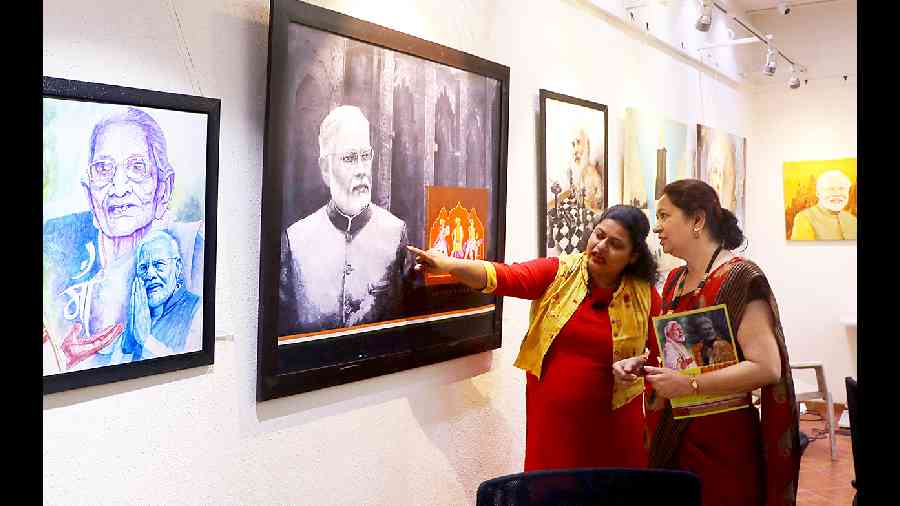The fact is undeniable that ‘nationalism’, as it developed in post-Westphalian Europe, was fundamentally different from the anti-colonial ‘nationalism’ that emerged in third world countries in the twentieth century. At least three differences stand out: the former invariably identified ‘an enemy within’ (Catholics in northern Europe, Protestants in southern Europe, and Jews everywhere) while the latter was inclusive (it had to be for taking on the might of the colonial power); the former saw the nation as standing above the people for which the people only made sacrifices, while the latter saw the raison d’être of the nation as serving the (material) needs of the people; the former was invariably yoked to an imperialist project, while the latter, notwithstanding examples of aberration, was not.
These differences, in turn, arose from the difference in the class context: European nationalism accompanied the rise of an aggressive mercantile capitalist class, with capitalists from different nations vying with one another for domination at a global level, while anti-colonial nationalism was a multi-class phenomenon with the peasantry playing a major role in sustaining it (China and Vietnam, not to mention India, underscore this point), though the nascent third world bourgeoisie was also a part of this multi-class alliance. It is not surprising that as the bourgeoisie has come increasingly to dominate third world societies, especially with the onset of neoliberal policies, the nationalism it champions has come to resemble in crucial ways the European nationalism of yore, even while legitimising itself spuriously as the descendant of anti-colonial nationalism. A symptom of this illicit ‘substitution’ in the Indian case is the current apotheosis of ‘nationalism’.
The apotheosis of nationalism was always a feature of European nationalism, which gained in intensity with the development of monopoly capitalism. Rudolf Hilferding, the leading Marxist theoretician of finance capital, identified the ideology of finance capital as the “glorification of the national idea”; the struggle between rival financial oligarchies that exploded into the First World War was promoted by each protagonist appealing to ‘nationalism’, a phenomenon depicted by Erich Maria Remarque in his classic anti-war novel, All Quiet on the Western Front. The acme of this glorification of the ‘nation’ and the identification of the ‘nation’ with the ‘leader’ (whose glorification followed as a consequence) was reached under European fascism. In fact, fascism invariably apotheosizes the ‘nation’ and, by extension, the ‘leader’, who is supposed to symbolise the ‘nation’.
The problem with many progressive thinkers is that they think of ‘nationalism’ as a dirty word, invariably linked to monopoly capital and fascism. They use the term, ‘nationalism’, as a homogeneous category without drawing any distinction between European nationalism and third world nationalism and, hence, implicitly and unwittingly, endorse the claim of the neofascist movements, which have sprung up in many third world countries in the wake of the crisis of neoliberalism, that they are a continuation of the nationalism of the anti-colonial struggle. They completely miss, for instance, the distinction between multi-class (above all, peasant) nationalism against imperialism and the so-called Hindutva nationalism that typifies neofascism.
Among the markers that distinguish the two (some of which were mentioned in passing above), one in particular deserves attention. The emergence of a pan-Indian nationalism in the course of the anti-colonial struggle was accompanied at the same time by the emergence of specific regional-linguistic nationalisms, such as Bengali, Tamil, Gujarati, Telugu or Oriya nationalisms; indeed, pan-Indian nationalism was propagated in regional languages whose flowering had come with the rise of regional-linguistic nationalisms. Such a “dual national consciousness” (to use Amalendu Guha’s phrase) was possible only under the umbrella of anti-colonialism. The post-Independence administrative arrangement corresponding to this duality was a federal structure with a division of powers and responsibilities between the Centre and the states, the latter seen as the custodian of regional-linguistic national consciousness.
A feature of the apotheosis of nationalism that has occurred under the Hindutva regime is the gradual suppression of regional-linguistic nationalism. This manifests itself in several ways, from attempts at imposing Hindi to a squeezing of state government finances. The tendency towards greater concentration of powers and resources in the hands of the Hindutva-dominated Central government amounts not only to an attenuation of the powers of state governments but also to a snuffing out of regional-linguistic national consciousness. The dual national consciousness, in short, is being flattened into a single national consciousness, not the one that was a part of the old duality, but one that is altogether different, a Hindutva national consciousness.
This flattening of different layers into one single layer of Hindutva nationalism and the apotheosis of this nationalism are accompanied by an apotheosis of the ‘leader’. Indeed, the apotheosis of the ‘leader’ is immanent in the apotheosis of the ‘nation’. Since the ‘nation’ cannot speak for itself, then, if it is to be deified, someone must speak for it; and this can only be the ‘leader’ who incarnates the ‘nation’. This, indeed, is the real reason behind deifying the ‘nation’; anyone speaking against the ‘leader’ then ipso facto becomes ‘anti-national’.
One can see everywhere this attempt at identifying the ‘leader’ with the ‘nation’. An obvious instance is the claim, against Opposition political parties, that ‘Modiji enjoys the support of 140 crore people’. The fact that the ruling party has won only a majority of Lok Sabha seats, and that too with less than 50% of the total votes because of the first past the post rule, is conveniently forgotten. What we are witnessing is a classic attempt at pushing a neofascist outlook.
Prabhat Patnaik is Professor Emeritus, Centre for Economic Studies, Jawaharlal Nehru University, New Delhi










